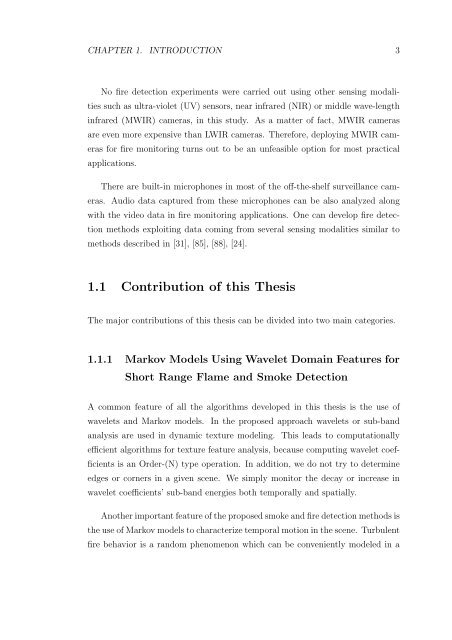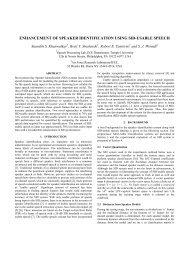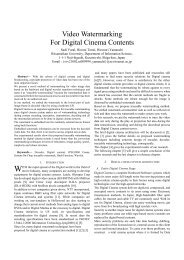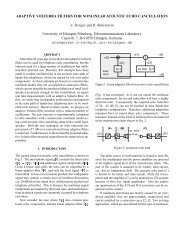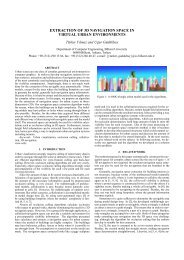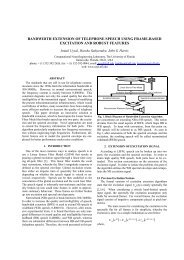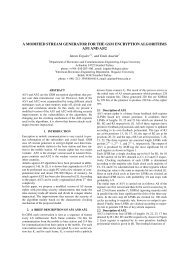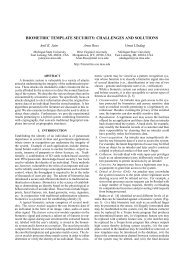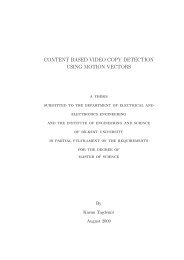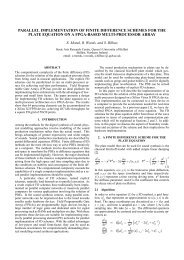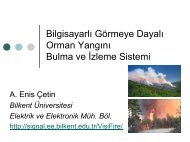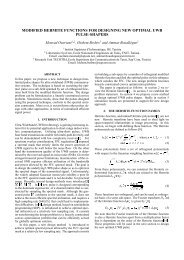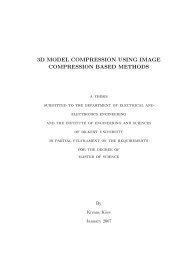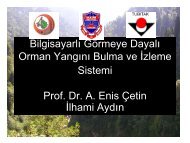Fire Detection Algorithms Using Multimodal ... - Bilkent University
Fire Detection Algorithms Using Multimodal ... - Bilkent University
Fire Detection Algorithms Using Multimodal ... - Bilkent University
You also want an ePaper? Increase the reach of your titles
YUMPU automatically turns print PDFs into web optimized ePapers that Google loves.
CHAPTER 1. INTRODUCTION 3<br />
No fire detection experiments were carried out using other sensing modalities<br />
such as ultra-violet (UV) sensors, near infrared (NIR) or middle wave-length<br />
infrared (MWIR) cameras, in this study. As a matter of fact, MWIR cameras<br />
are even more expensive than LWIR cameras. Therefore, deploying MWIR cameras<br />
for fire monitoring turns out to be an unfeasible option for most practical<br />
applications.<br />
There are built-in microphones in most of the off-the-shelf surveillance cameras.<br />
Audio data captured from these microphones can be also analyzed along<br />
with the video data in fire monitoring applications. One can develop fire detection<br />
methods exploiting data coming from several sensing modalities similar to<br />
methods described in [31], [85], [88], [24].<br />
1.1 Contribution of this Thesis<br />
The major contributions of this thesis can be divided into two main categories.<br />
1.1.1 Markov Models <strong>Using</strong> Wavelet Domain Features for<br />
Short Range Flame and Smoke <strong>Detection</strong><br />
A common feature of all the algorithms developed in this thesis is the use of<br />
wavelets and Markov models. In the proposed approach wavelets or sub-band<br />
analysis are used in dynamic texture modeling. This leads to computationally<br />
efficient algorithms for texture feature analysis, because computing wavelet coefficients<br />
is an Order-(N) type operation. In addition, we do not try to determine<br />
edges or corners in a given scene. We simply monitor the decay or increase in<br />
wavelet coefficients’ sub-band energies both temporally and spatially.<br />
Another important feature of the proposed smoke and fire detection methods is<br />
the use of Markov models to characterize temporal motion in the scene. Turbulent<br />
fire behavior is a random phenomenon which can be conveniently modeled in a


